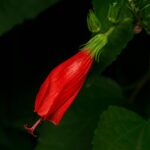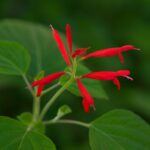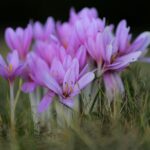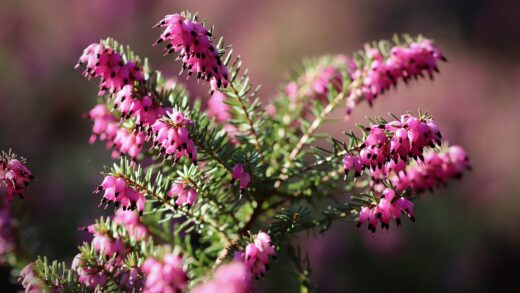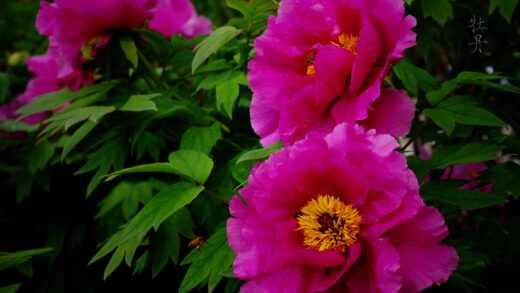The single most important environmental factor determining the success of the Madagascar periwinkle is the amount of light it receives. This plant is a true sun worshipper, and its entire life cycle, from vegetative growth to the production of its famously vibrant flowers, is driven by high light intensity. Originating from the sun-drenched landscapes of Madagascar, its genetic makeup is programmed to thrive under conditions of direct, unfiltered sunlight. Providing anything less than its optimal light requirements will invariably lead to a plant that is underwhelming in both its stature and its floral display. Therefore, a thorough understanding of its relationship with the sun is not just beneficial; it is absolutely essential for any gardener wishing to cultivate this species to its full potential.
To put it simply, more sun equals more flowers. The plant’s photosynthetic machinery operates at peak efficiency in full sun, converting light energy into the chemical energy needed to fuel growth and, most importantly, to initiate and sustain the development of flower buds. In a location that receives at least six to eight hours of direct sunlight per day, the Madagascar periwinkle will grow into a compact, bushy plant that is densely covered in blooms from early summer until the first frost. This direct correlation between light duration and flowering is the primary principle that should guide your site selection.
Conversely, when planted in a location that receives insufficient light, the plant’s response is predictable and disappointing. It will exhibit classic signs of light deprivation, a condition known as etiolation. The stems will become elongated, weak, and “leggy” as the plant stretches in a desperate attempt to reach for more light. The foliage will often be a paler shade of green, and the overall plant will have a sparse, open appearance rather than the dense, mounded habit it is known for. Most significantly, flowering will be drastically reduced or may fail to occur altogether.
It is important to differentiate between direct sun and bright, indirect light. While many plants can thrive in the bright light of a covered porch or near a sunny window, the Madagascar periwinkle requires the sun’s rays to fall directly on its leaves for a significant portion of the day. This is a crucial distinction, especially for gardeners choosing locations for containers or planning mixed garden beds. Prioritizing the sunniest spots in your garden for this particular species is a strategic decision that will yield the most rewarding results.
The importance of full sun exposure
Full sun exposure is technically defined as receiving six or more hours of direct, unobstructed sunlight per day. For the Madagascar periwinkle, this is not just a recommendation but a fundamental requirement for healthy development. The intense energy provided by direct sunlight is the catalyst for the entire range of physiological processes that make this plant a garden standout. It fuels the robust growth of its glossy, dark green leaves and provides the energy needed for the continuous production of its colourful flowers. A plant situated in a prime, full-sun location will be noticeably more vigorous and floriferous than its counterparts in shadier spots.
More articles on this topic
The ideal placement for Madagascar periwinkle is in a south or west-facing location where it will be exposed to the sun during the middle of the day when its rays are most intense. These locations typically receive the longest duration of direct sunlight, ensuring the plant’s daily light quota is easily met. This is why they perform so well in open garden beds, along sunny borders, in parking lot islands, and in containers placed on sun-drenched patios or pool decks. They are perfectly adapted to absorb this high level of solar radiation without suffering from the leaf scorch that can affect less sun-tolerant species.
This preference for full sun also contributes to the plant’s overall health and disease resistance. Sunlight helps to quickly dry morning dew or rain from the plant’s foliage, which significantly reduces the incidence of common fungal diseases that thrive in moist conditions. The warm, dry environment created by full sun exposure is less hospitable to pathogens like leaf spot and botrytis. Therefore, providing ample sunlight is not only an aesthetic consideration but also a critical component of preventative plant healthcare.
It is also worth noting that the intensity of the sun can vary by geographic location and time of year. In northern latitudes, where the sun’s angle is lower, providing the maximum possible sun exposure is even more critical. In very hot southern climates, while the plant still needs at least six hours of sun, it can appreciate some light shade during the most intense part of the late afternoon to prevent potential heat stress. However, this is the exception rather than the rule, and for the vast majority of gardening zones, the “more sun is better” principle holds true.
Impact of light on flowering and growth
The quantity and quality of light have a direct and profound impact on the flowering mechanism of the Madagascar periwinkle. This plant is what is known as a day-neutral plant, which means its flowering is not primarily triggered by the length of the day, but rather by its overall maturity and the total amount of light energy it accumulates. In simple terms, the more light it receives, the more energy it can produce through photosynthesis, and this surplus energy is then channelled into the production of flowers. This is why a plant in full sun will be covered in blooms while one in the shade will produce few, if any.
More articles on this topic
Light also plays a crucial role in the development of the plant’s structure and form. In high light conditions, the nodes on the stems (the points where leaves emerge) remain close together, resulting in a compact, bushy, and well-branched plant. This dense growth habit is highly desirable, as it creates a fuller appearance and provides more sites for flower buds to form. The foliage will also be a rich, deep green, as the leaves produce an abundance of chlorophyll to efficiently process the available sunlight.
In contrast, in low light conditions, the plant initiates a shade-avoidance response. It will allocate its limited energy resources to growing taller in an attempt to outcompete neighbouring plants and reach a source of direct light. This results in stretched internodes (the sections of stem between the nodes), leading to a lanky, sparse, and structurally weak plant. This leggy growth is not only unattractive but also makes the plant more susceptible to being damaged by wind or rain.
Furthermore, the intensity of the flower colour can also be influenced by light levels. The pigments that give the flowers their vibrant hues of pink, red, and lavender are often produced more intensely in high light conditions. A plant grown in full, bright sun will typically display flowers with deeper, more saturated colours compared to the same plant grown in a shadier location. This is yet another reason why providing optimal light is key to achieving the stunning visual impact for which the Madagascar periwinkle is prized.
Adapting to partial shade conditions
While full sun is the undisputed ideal, the Madagascar periwinkle can tolerate partial shade, but it is important to have realistic expectations about its performance in such conditions. Partial shade is typically defined as an area that receives between three and six hours of direct sun per day. In these settings, the plant will still grow and produce flowers, but the overall number of blooms will be noticeably reduced compared to a plant in full sun. The key to success in a partial shade location is to ensure that the hours of sun it does receive are direct and preferably occur during the morning.
Morning sun is generally cooler and less intense than afternoon sun, which can be beneficial. A location that receives several hours of direct morning sun followed by shade in the hot afternoon can be a suitable compromise, especially in very hot climates where some protection from the intense afternoon heat can reduce water stress. However, a location that receives only dappled light throughout the day or a few hours of weak, late-afternoon sun will likely result in a leggy plant with very sparse flowering.
If you must plant in a location with less than the ideal amount of sun, there are a few things you can do to help maximize the plant’s performance. Proper spacing becomes even more critical to ensure that the plants are not shading each other and are receiving the maximum available light. It is also important to be more diligent with pinching back the stems early in the season. This encourages branching and can help to create a fuller, more compact plant, counteracting some of the natural tendency to become leggy in lower light.
Ultimately, while the plant can adapt and survive in partial shade, it will not deliver the show-stopping, continuous bloom that it is famous for. If your garden is predominantly shady, it may be better to choose a different plant species that is naturally adapted to those conditions rather than trying to force a sun-loving plant like the Madagascar periwinkle to perform in an unsuitable environment. Choosing the right plant for the right place is a fundamental principle of successful gardening.
Recognizing signs of inadequate light
It is relatively easy to diagnose if your Madagascar periwinkle is not receiving enough light, as the plant will exhibit several clear and distinct symptoms. The most obvious sign is a significant reduction in flowering. A healthy plant in adequate sun should be consistently producing new buds and flowers throughout the growing season. If your plant has produced only a few blooms, or if it flowered early in the season and then stopped, insufficient sunlight is the most likely culprit. This is the first and most telling indicator of a light deficiency.
Another unmistakable symptom is leggy growth, also known as etiolation. The stems of the plant will appear stretched out, with long distances between the leaf sets. This gives the plant a sparse, open, and often untidy appearance, rather than the dense, mounded form it should have. This stretching is a direct physiological response to the plant seeking more light. You may also notice that the stems are weaker and more flexible than they should be, making them prone to flopping over.
The foliage of a light-deprived plant will also provide clues. Instead of the typical glossy, deep green colour, the leaves may appear a dull, pale green or even yellowish. This is because the plant is not producing as much chlorophyll, the pigment responsible for photosynthesis and the green colour of leaves. The individual leaves may also be smaller than normal, as the plant conserves its limited energy resources.
If you observe these symptoms, the solution is straightforward: move the plant to a sunnier location. If the plant is in a container, this is a simple task. If it is in a garden bed, you may need to consider transplanting it to a more suitable spot in your garden. When you move a plant from a shady location to a very sunny one, it is important to do so gradually over a few days to allow the leaves to acclimate to the higher light intensity and prevent sunburn. Correcting the light situation will quickly result in improved growth and a new flush of flowers.









